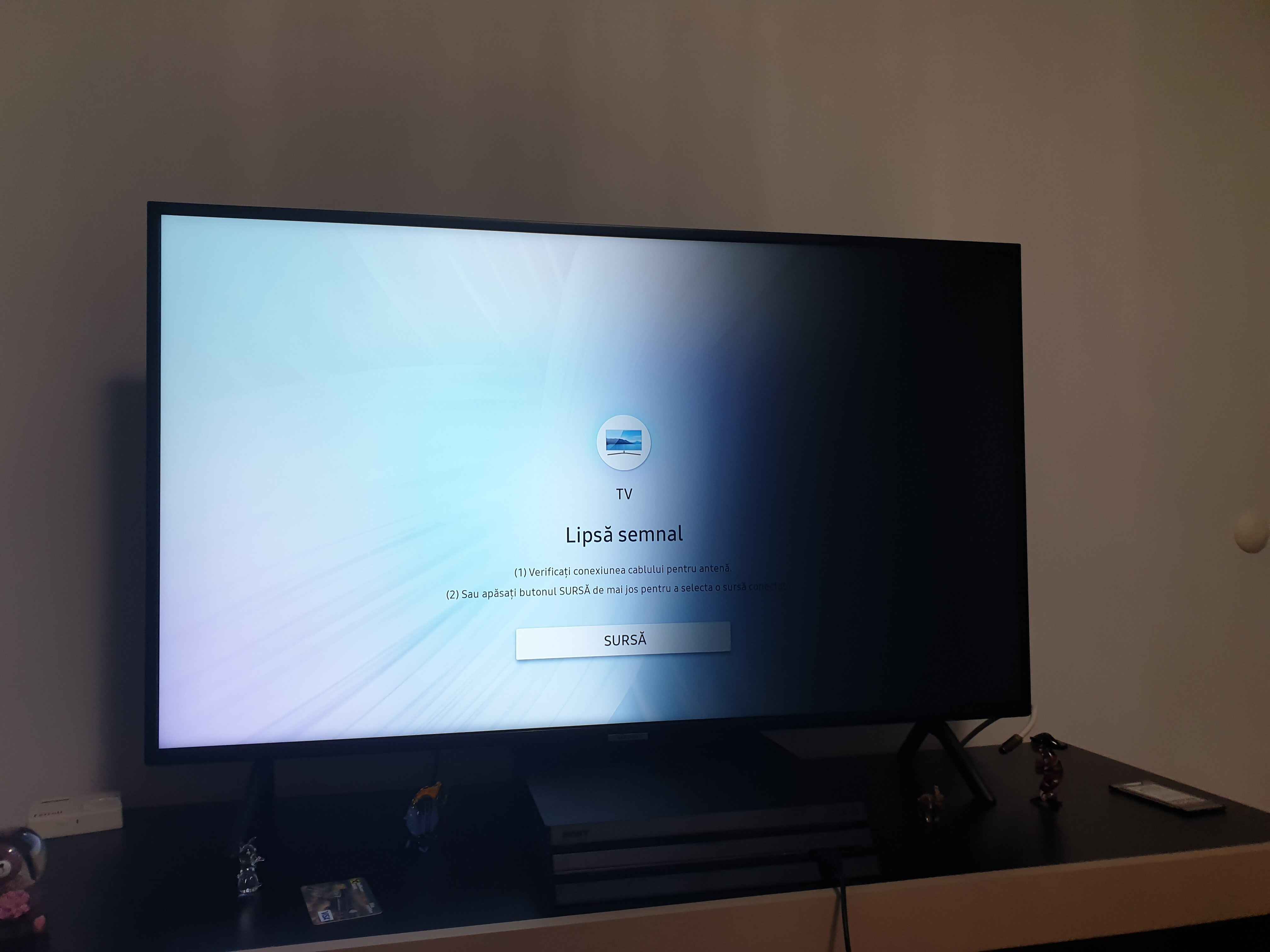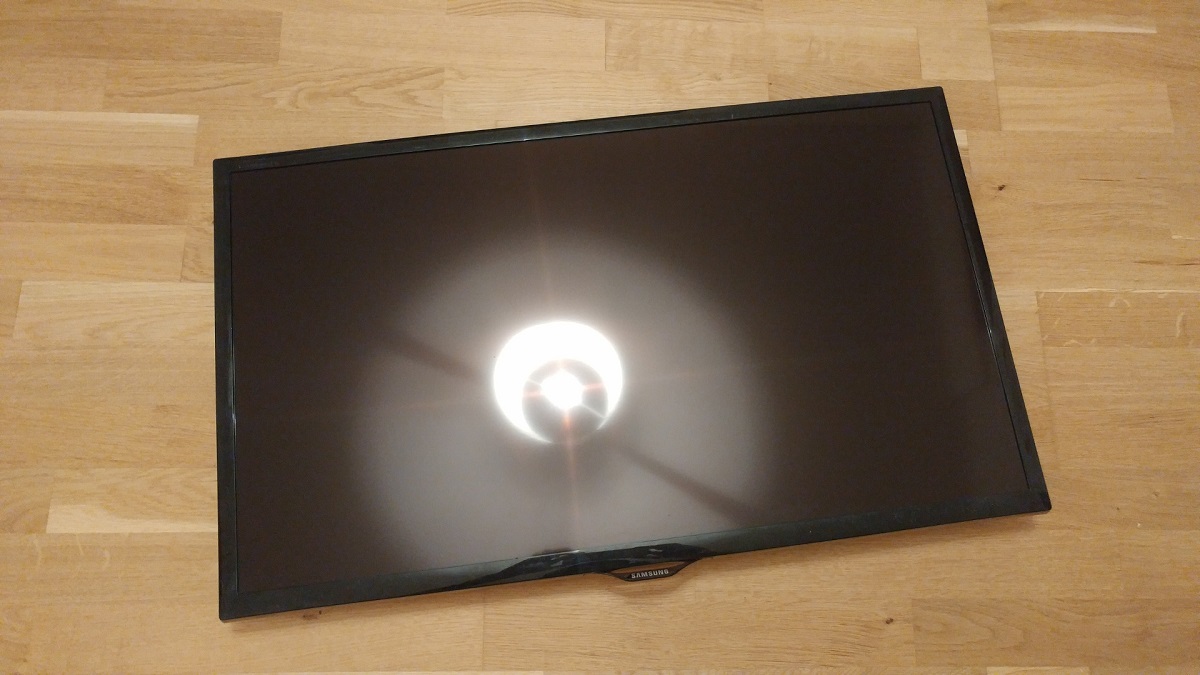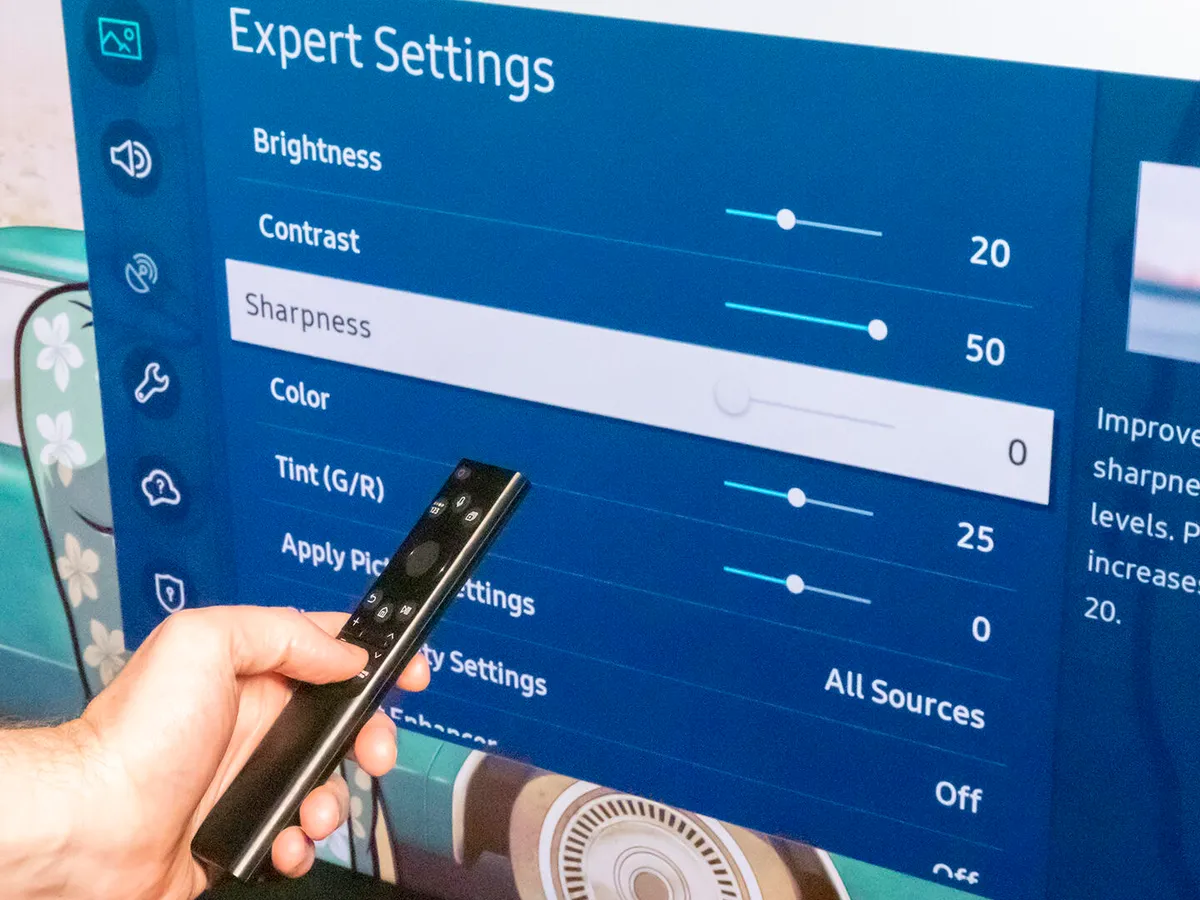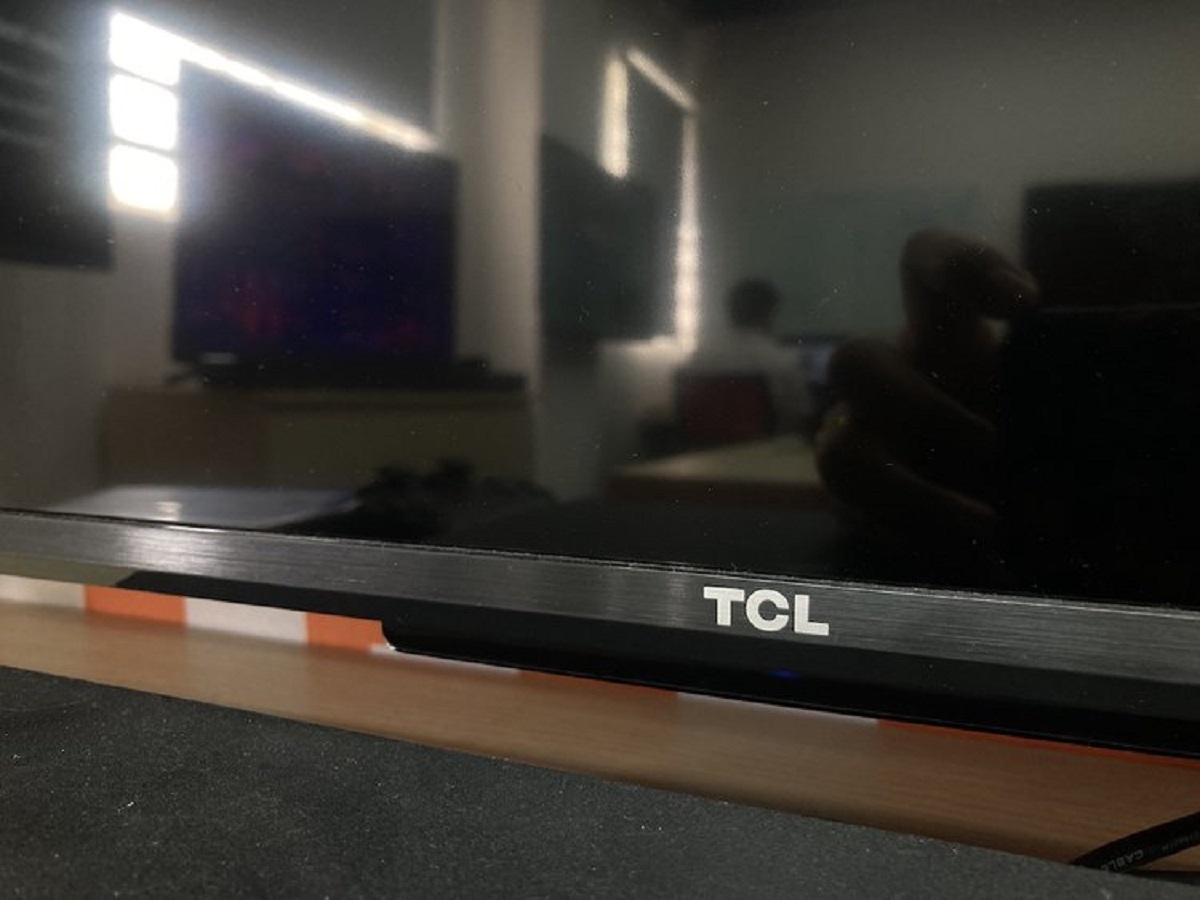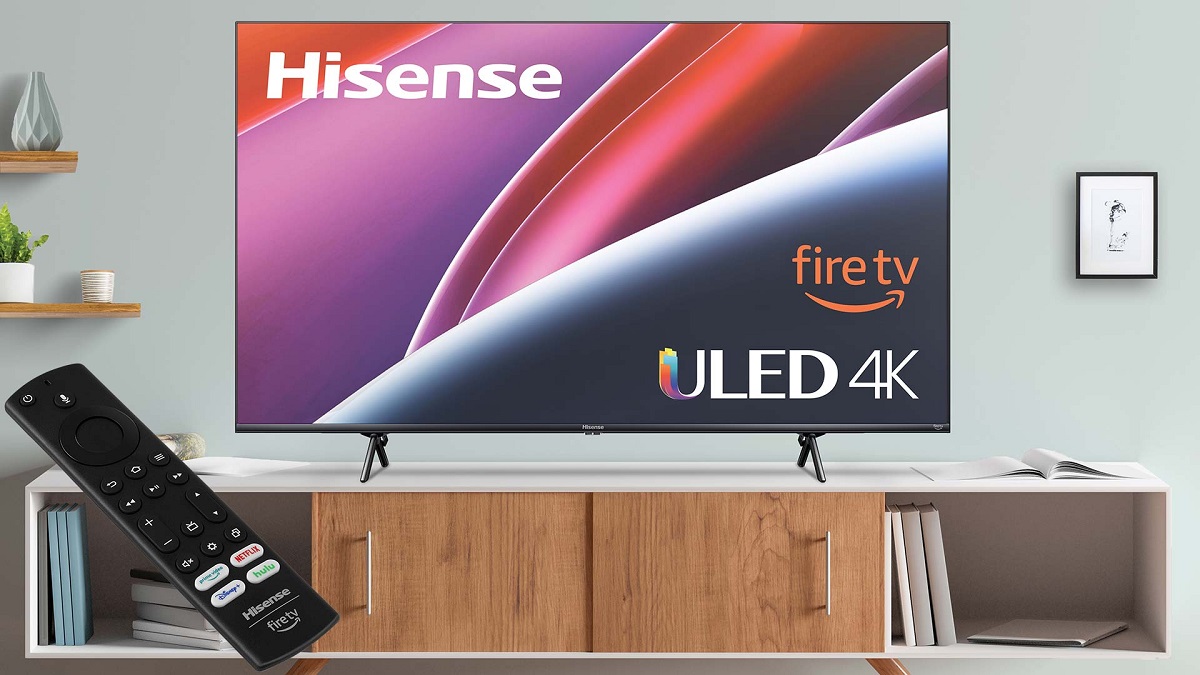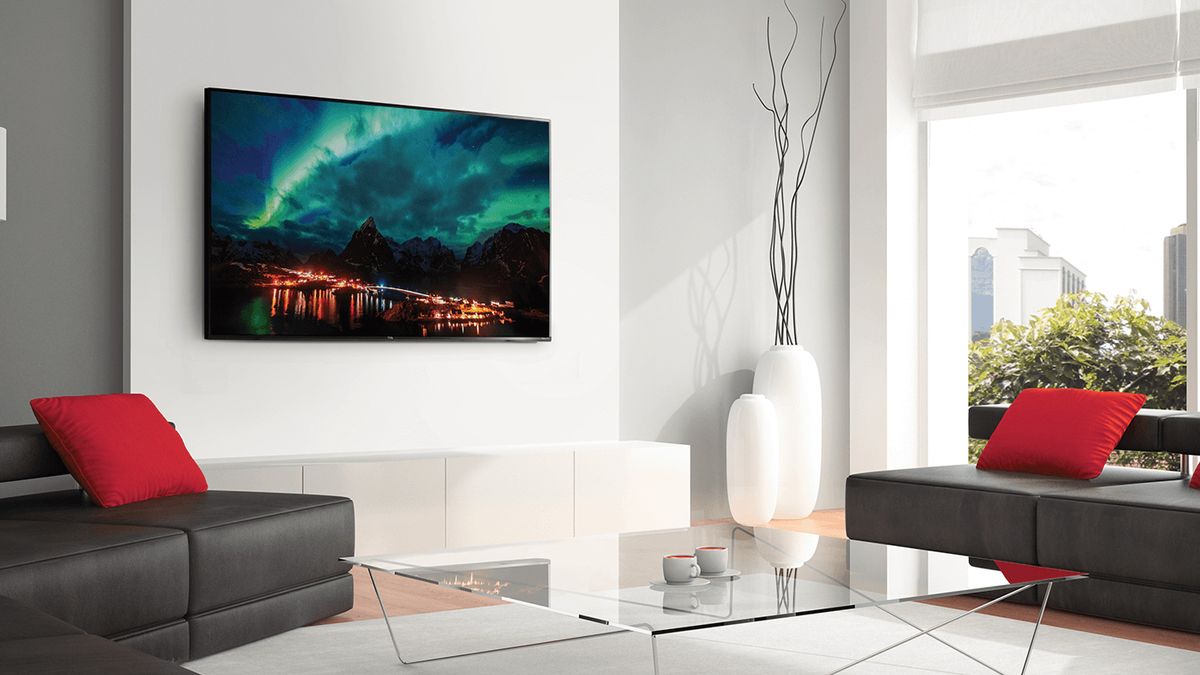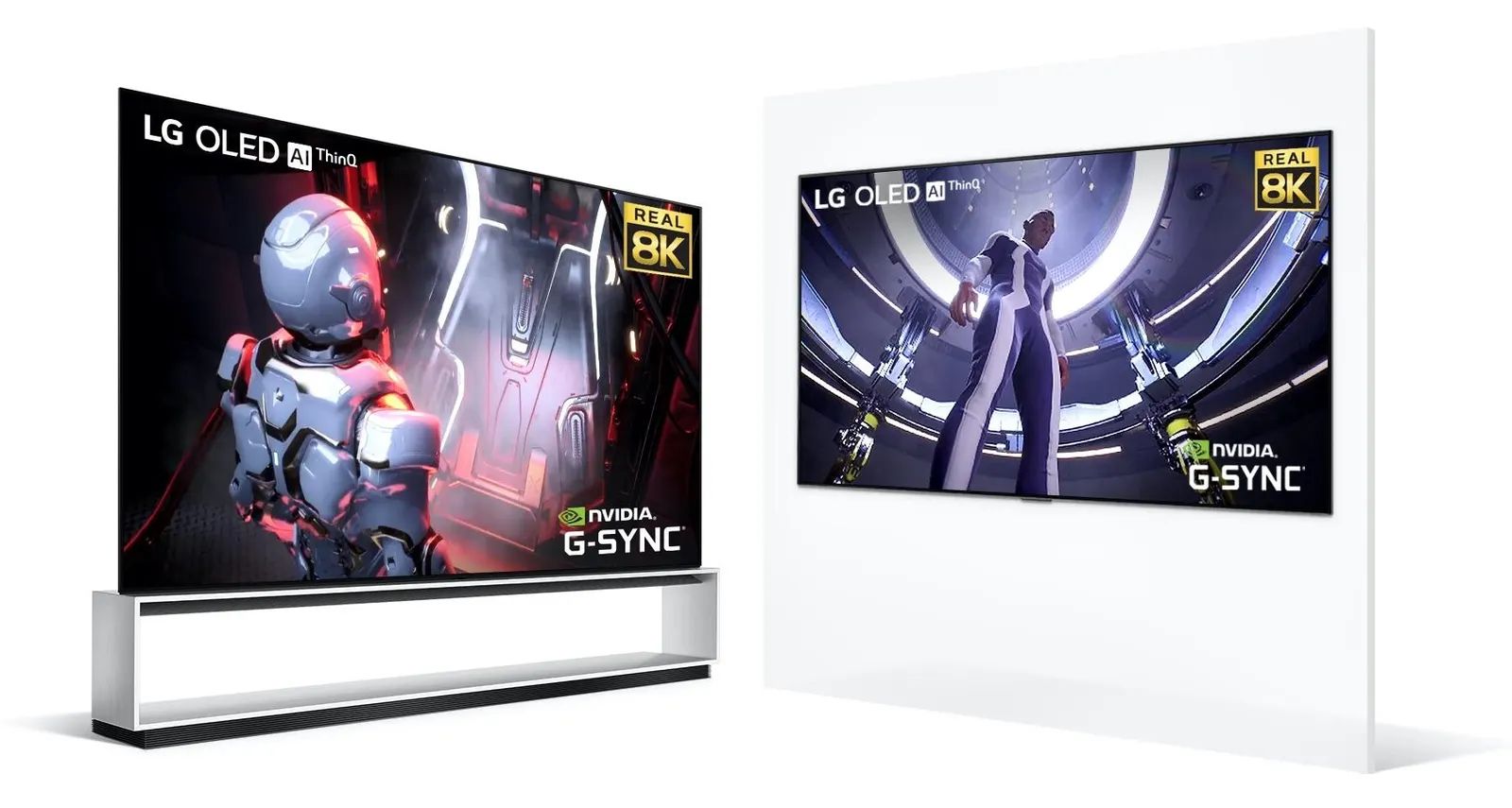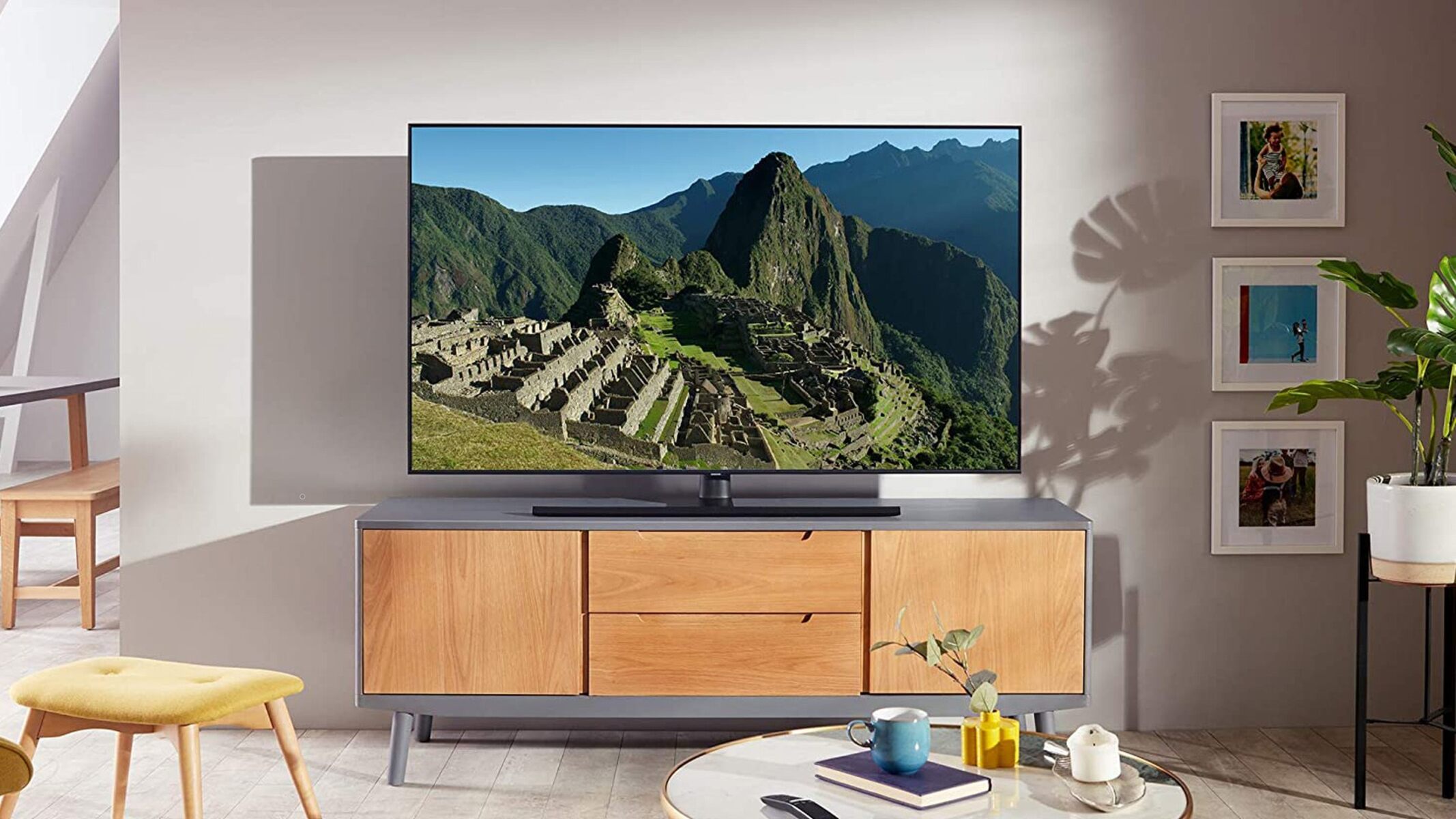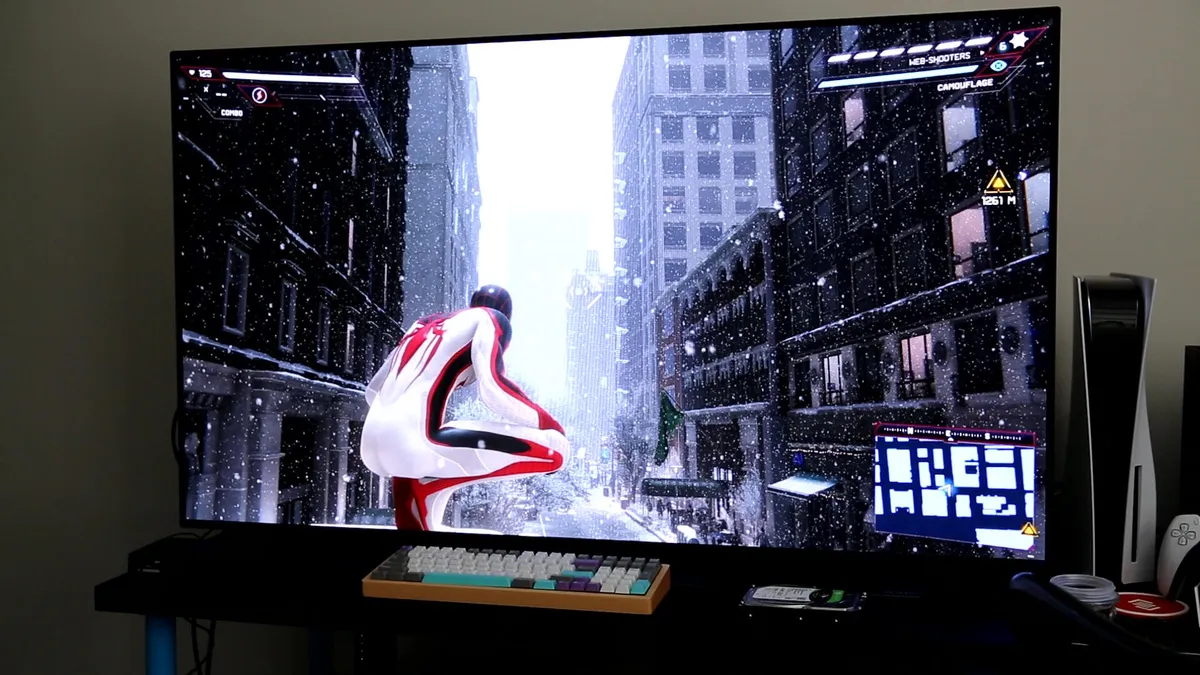Possible Causes for a Black Smart TV Screen
A black screen on your smart TV can be frustrating, especially when you’re expecting to enjoy your favorite shows or movies. There are several potential causes for this issue, ranging from minor technical glitches to more serious hardware problems. In this section, we will explore the common reasons behind a black smart TV screen.
1. Electrical Issue: Sometimes, a power surge or fluctuation can disrupt the functioning of your smart TV, leading to a black screen.
2. Loose Connections: Check if all the cables connecting your smart TV, external devices, and power supply are securely plugged in. A loose connection can result in a blank screen.
3. Faulty HDMI Cable: If you’re using an HDMI cable to connect your smart TV to an external device, it’s possible that the cable is defective or not properly connected.
4. Incorrect Input Source: Make sure you have selected the correct input source on your smart TV. If it’s set to an inactive or non-existent source, you won’t see any picture.
5. Power Saving Mode: Some smart TVs have a power-saving feature that can dim or turn off the screen after a certain period of inactivity. Check if this mode is enabled and disable it if necessary.
6. Software or Firmware Issues: Outdated software or firmware can cause various issues, including a black screen. Ensure that your smart TV is running the latest updates.
7. Backlight Failure: The backlight is responsible for illuminating the screen. If the backlight malfunctions, it can result in a black screen while the audio or other features continue to function.
8. Hardware Problem: In rare cases, a hardware issue such as a faulty component or a malfunctioning panel may be the reason for the black screen on your smart TV.
These are some of the possible causes behind a black smart TV screen. In the following section, we will discuss troubleshooting steps to help you resolve this issue and get back to enjoying your favorite content.
Electrical Issue
One of the possible causes of a black screen on your smart TV is an electrical issue. Power surges and fluctuations can disrupt the normal functioning of your TV, resulting in a blank screen.
To troubleshoot this issue, start by checking the power supply and the electrical outlet. Ensure that the power cord is securely plugged into both the TV and the wall socket. If you have a power strip or surge protector, make sure it is functioning properly and not overloaded.
If you suspect an electrical issue, try unplugging the TV from the power source and leaving it disconnected for a few minutes. This will allow any residual electrical charge to dissipate. Then, plug it back in and try turning it on again to see if the black screen issue is resolved.
Another potential electrical problem is a faulty power adapter. If you are using an external power adapter for your TV, check if it is working correctly. Look for any signs of damage or loose connections. If necessary, try using a different power adapter or contact the manufacturer for a replacement.
In some cases, the issue may not be with the TV itself, but with the electrical system in your home. If you suspect this to be the case, consider contacting a professional electrician to evaluate and resolve any electrical issues that may be affecting your smart TV.
It’s important to note that electrical issues can be potentially hazardous, so always prioritize safety when troubleshooting. If you are unsure or uncomfortable working with electrical components, it is advisable to seek assistance from a qualified technician.
By addressing any potential electrical problems, you can eliminate this potential cause for a black screen on your smart TV. If the issue persists, it may be necessary to explore other possible causes, which will be discussed in the following sections.
Loose Connections
A common reason for a black screen on your smart TV is loose connections. If the cables connecting your TV to external devices or the power supply are not securely plugged in, it can result in a blank screen.
To troubleshoot this issue, start by checking all the connections. Verify that the HDMI or other video cables are securely connected to both the TV and the external device, such as a cable box or game console. Ensure that the audio cables, such as optical or RCA cables, are also properly plugged in.
Next, check the power cable. Make sure it is firmly connected to the TV and the power outlet. If you are using an external power supply or power adapter, verify that it is securely plugged in as well.
If you have multiple devices connected to your smart TV, check if the issue is specific to one device or affects all of them. Try disconnecting and reconnecting the cables for the problematic device.
It’s also worth inspecting the cables for any signs of damage. Bent pins, frayed wires, or other visible issues could indicate a faulty cable that needs to be replaced.
If you’re using a wireless connection, such as Wi-Fi or Bluetooth, ensure that the network or pairing settings are correct. Check if the device you’re trying to connect to the TV is within range and properly paired.
Once you have verified and reconnected all the necessary cables, test whether the black screen issue is resolved by turning on your smart TV. If the screen appears normal, the problem was likely due to loose connections.
If the issue persists, it may be necessary to explore other potential causes, which will be discussed in subsequent sections.
Remember to handle the cables and connections with care to avoid any further damage. If you are unsure or uncomfortable working with cables, it is advisable to seek assistance from a professional technician.
Faulty HDMI Cable
A faulty HDMI cable is another possible cause for a black screen on your smart TV. HDMI cables are commonly used to connect external devices, such as gaming consoles, Blu-ray players, or streaming devices, to your TV.
If you’re experiencing a black screen, try swapping out the HDMI cable with a different one. Use a known-working cable or borrow one from another device to test if the issue is specifically related to the cable.
Inspect the HDMI cable for any signs of physical damage, such as frayed wires or bent connectors. Even a small break in the cable can result in a loss of signal and a black screen. If you find any damage, it’s recommended to replace the cable.
When connecting the HDMI cable, make sure it is inserted securely into the HDMI port on both the TV and the external device. Sometimes, a loose connection can cause intermittent black screen issues. Gently wiggle the cable to ensure it is securely in place.
If your TV has multiple HDMI ports, try connecting the device to a different HDMI port. This can help determine if the issue is specific to a particular port or if it is related to the cable itself.
Additionally, check the HDMI settings on both your smart TV and the connected external device. Make sure that the correct HDMI input is selected on your TV and that the external device is outputting the signal through HDMI.
If the black screen issue persists even after trying a different HDMI cable and port, it’s possible that the HDMI port on your TV or the connected device is faulty. In this case, you may need to consult the manufacturer or seek professional assistance for further troubleshooting or repair.
It’s worth noting that HDMI cables have different versions, such as HDMI 1.4, HDMI 2.0, and HDMI 2.1, which support different resolutions and features. Ensure that your cable is compatible with the devices and resolutions you are using to avoid any compatibility issues.
By addressing a faulty HDMI cable, you can potentially resolve the black screen issue on your smart TV. If the problem persists, continue to explore other potential causes, which will be discussed in subsequent sections.
Incorrect Input Source
An incorrect input source selection is a common and easily overlooked reason for a black screen on your smart TV. If you have multiple devices connected to your TV, such as a cable box, game console, or DVD player, it’s possible that the TV is set to the wrong input source.
To check and adjust the input source settings, use the remote control that came with your TV or locate the input/source button on the TV itself. Press this button to display the input/source menu on the screen.
Navigate through the available input options using the arrow keys on your remote control or the corresponding buttons on the TV. Look for the input source associated with the device you want to use, such as HDMI 1 for a Blu-ray player or HDMI 2 for a gaming console.
Select the correct input source and wait for a few seconds to see if the black screen issue is resolved. Sometimes, it may take a few seconds for the TV to recognize and display the incoming signal.
If you’re unsure which input source is correct, try cycling through all available options, checking each one for a picture. It’s possible that the device you want to use is connected to a different input than you initially thought.
Some smart TVs also have an auto-detect feature that automatically switches to the active input source when a signal is detected. If this feature is enabled on your TV, it can help simplify the process of selecting the correct input source.
If you have recently changed the configuration of your devices or cables, it’s also a good idea to power off all connected devices and then power them on one at a time, allowing the TV to recognize and adjust to each device as it is turned on.
By ensuring that the correct input source is selected on your smart TV, you can eliminate this potential cause for a black screen issue. If the problem persists, continue to explore other possible causes, which will be discussed in subsequent sections.
Power Saving Mode
Power saving mode is a feature available on many smart TVs that is designed to reduce energy consumption by dimming or turning off the screen after a period of inactivity. However, sometimes this mode can inadvertently cause a black screen on your smart TV.
If your TV is in power saving mode, it may automatically dim the screen or turn it off completely if there is no user activity detected for a certain period of time. This can give the appearance of a black screen, even though the TV is still powered on.
To check if power saving mode is enabled on your smart TV, access the settings menu. Look for an option related to power or energy-saving settings. In this menu, you should be able to see the power-saving mode options and adjust them as needed.
Disable power saving mode or adjust the settings to your preference. You may have the option to choose a different level of power-saving or to customize the duration of inactivity before the screen dims or turns off.
It’s also important to note that some smart TVs have different power-saving profiles for different input sources. This means that the power saving mode may be enabled for certain input sources, but not others. Check the power-saving settings for each input source you are using to ensure consistent behavior.
If you suspect that power saving mode is causing the black screen issue, try pressing any button on your remote control or moving the mouse if your TV has a built-in web browser. This should reactivate the screen and bring back the display.
Keep in mind that power saving mode is designed to conserve energy and extend the lifespan of your TV. However, if it is causing inconvenience or interrupting your viewing experience, you have the option to disable or adjust this feature to suit your needs.
By checking and adjusting the power saving mode settings on your smart TV, you can address this potential cause for a black screen. If the problem persists, continue to explore other potential causes, which will be discussed in subsequent sections.
Software or Firmware Issues
Software or firmware issues can contribute to a black screen problem on your smart TV. Over time, the software or firmware that runs your TV may become outdated or encounter glitches that can affect its functionality.
To address software or firmware issues, it is recommended to keep your smart TV up to date with the latest software updates. Manufacturers often release firmware updates that include bug fixes, performance enhancements, and compatibility improvements.
Check the settings menu on your smart TV for a “Software Update” or “Firmware Update” option. Follow the on-screen prompts to check for and install any available updates. This process may vary depending on the make and model of your TV.
If your smart TV has a built-in internet connection, you may be able to update the software or firmware directly from the TV. However, if your TV does not have internet connectivity, you will need to visit the manufacturer’s website and download the latest firmware onto a USB drive. Then, insert the USB drive into your TV and follow the instructions provided to install the update.
In some cases, performing a factory reset can help resolve software-related issues. Keep in mind that this will restore your TV to its original settings and erase all personal preferences and settings. Make sure to backup any important data or settings before proceeding with a factory reset.
If updating the software or firmware and performing a factory reset does not resolve the black screen issue, it may be necessary to contact the manufacturer’s support or seek professional assistance. They can provide further guidance and troubleshoot any underlying software-related problems.
It’s important to note that software or firmware issues are typically beyond the control of the user and are best addressed by the manufacturer or a qualified technician. It is not recommended to attempt to modify or update the software on your own unless you are confident in your technical abilities.
By keeping your smart TV’s software or firmware up to date and addressing any potential glitches, you can minimize the chances of encountering a black screen due to software-related issues. If the problem persists, continue to explore other potential causes, which will be discussed in subsequent sections.
Backlight Failure
The backlight is an essential component of a smart TV that illuminates the screen and allows you to view content. If the backlight fails or malfunctions, it can result in a black screen while the audio and other features continue to function normally.
In some cases, the backlight issue may be noticeable as a faint glow or flickering on the screen. However, in other instances, it may simply appear as a completely black screen.
To determine if the backlight is the cause of the black screen, you can perform a simple test. Turn on your smart TV and shine a flashlight directly onto the screen. If you can see a faint or dim image, it indicates that the backlight is not functioning properly.
If you suspect a backlight failure, it is recommended to contact the manufacturer’s support or a professional technician for assistance. Backlight repairs typically require expert knowledge and specialized equipment.
In some cases, if your smart TV is still under warranty, the manufacturer may provide repairs or a replacement. Check the warranty information provided with your TV or contact the manufacturer for more details.
It’s important to note that attempting to repair the backlight on your own can be complex and may void any existing warranty. It’s best to leave this type of repair to trained professionals who can properly diagnose and resolve the issue.
Backlight failure can occur due to various reasons, such as a defective backlight panel, faulty power supply, or issues with the LED lights. Only a professional technician can accurately diagnose the cause and implement the appropriate repairs.
By addressing backlight failure through professional assistance, you can potentially resolve the black screen issue on your smart TV. If the problem persists, continue to explore other potential causes, which will be discussed in subsequent sections.
Hardware Problem
If all other troubleshooting methods have been exhausted and your smart TV still displays a black screen, it’s possible that the issue lies with a hardware problem. Hardware problems can arise due to various reasons, such as a faulty component, a malfunctioning panel, or other internal hardware issues.
Hardware problems can be challenging to diagnose and fix without professional expertise. It is recommended to contact the manufacturer’s support or consult with a qualified technician for further assistance.
When faced with a potential hardware problem, there are a few steps you can take to gather more information. First, check for any visible physical damage, such as cracked or damaged panels, loose connectors, or signs of overheating.
Next, try connecting a different device or using a different input source to see if the black screen issue persists. This can help determine if the problem is specific to the TV or if it’s related to the device or input you were previously using.
If your TV has a built-in diagnostic tool or service menu, you may be able to access it to run tests and gather more information about the hardware status. Consult the user manual or contact the manufacturer for specific instructions on accessing and utilizing these diagnostics.
It’s important to note that attempting to fix hardware issues on your own without the necessary expertise can potentially cause further damage or void the warranty. It’s always best to seek professional assistance to accurately diagnose the problem and implement the appropriate repairs.
Depending on the nature and severity of the hardware problem, repairs may involve replacing faulty components, repairing or replacing the display panel, or addressing other internal issues. The manufacturer’s support or a qualified technician will be proficient in performing such repairs.
While hardware problems can be frustrating, they are typically beyond the control of the user and often require professional intervention. By seeking expert guidance and assistance, you can address hardware issues and potentially resolve the black screen problem on your smart TV.
If the hardware problem persists or the cost of repair outweighs the value of the TV, it may be necessary to consider replacing the TV altogether. However, consult with a professional technician before making any final decisions.
Troubleshooting Steps to Fix a Black Smart TV Screen
Experiencing a black screen on your smart TV can be frustrating, but there are several troubleshooting steps you can take to try and resolve the issue before seeking professional assistance. Here are some steps to follow:
1. Check Power Supply and Electrical Outlet: Ensure that the power cord is securely connected to both the TV and the wall outlet. Try unplugging the TV and leaving it disconnected for a few minutes before plugging it back in and powering it on again.
2. Verify Connections and Cables: Check all the cables connecting your TV to external devices and power supply. Ensure they are securely plugged in and not damaged. Consider reseating the cables or using a different cable to test if the issue is cable-related.
3. Test with Different HDMI Cable: If you’re using an HDMI cable to connect your TV to an external device, try using a different HDMI cable to rule out any possible cable issues.
4. Check Input Source Settings: Make sure you have selected the correct input source on your TV. Use the input/source button on your remote control or TV to cycle through the options until you find the correct one.
5. Disable Power Saving Mode: Check if your TV is in power saving mode and disable it if necessary. This mode can dim or turn off the screen after a period of inactivity, which may result in a black screen.
6. Restart or Reset the Smart TV: Try restarting your TV by turning it off and unplugging it for a few minutes before plugging it back in and turning it on. Alternatively, you may have the option to perform a factory reset, but be aware that this will erase all personal settings and preferences.
7. Check Backlight Settings: Ensure that the backlight settings on your TV are configured correctly. Adjust the brightness or backlight settings to see if it resolves the black screen issue.
8. Seek Professional Assistance if Necessary: If none of the above steps resolve the black screen problem, it may indicate a more serious hardware or software issue. Consider contacting the manufacturer’s support or consult with a qualified technician for further assistance.
Remember to handle any troubleshooting steps with care and follow the manufacturer’s guidelines. If you are unsure or uncomfortable with any step, it’s best to seek professional assistance rather than risk causing further damage.
By following these troubleshooting steps, you can potentially identify and resolve the cause of the black screen on your smart TV. If the issue persists, it may be necessary to consult with a professional for further diagnosis and repair.
Check Power Supply and Electrical Outlet
One of the first steps to take when troubleshooting a black screen on your smart TV is to check the power supply and the electrical outlet. Electrical issues can often be a common culprit behind display problems.
Start by ensuring that the power cord is securely connected to both your TV and the wall outlet. Sometimes, the cord can become loose or accidentally unplugged, resulting in a loss of power to the TV. Firmly plug in the power cord and make sure it is snugly connected at both ends.
Next, verify that the electrical outlet itself is functioning properly. Plug in a different electronic device, such as a lamp or phone charger, to confirm that the outlet has power. If the other device doesn’t work either, the issue may lie with the outlet or the circuit breaker. In this case, try plugging the TV into a different outlet or resetting the circuit breaker if it has tripped.
It’s important to note that power surges or fluctuations can also affect the functionality of your smart TV. If there was a recent power outage or electrical disturbance in your area, it’s possible that your TV’s power supply may have been affected. In such cases, it can be helpful to unplug the TV from the power source and leave it disconnected for a few minutes. Then, plug it back in and power it on to see if the black screen issue is resolved.
If you suspect an issue with the power cord or the power supply itself, it’s advisable to contact the manufacturer’s support or consult with a professional technician. They can provide guidance on troubleshooting power-related problems or assist with any necessary repairs or replacements.
Remember to prioritize safety when handling electrical components. If you are unsure or uncomfortable working with power sources, it’s best to seek professional assistance rather than risk injury or further damage to your TV.
By checking the power supply and electrical outlet, you can eliminate any potential power-related problems as the cause of the black screen on your smart TV. If the issue persists, continue troubleshooting by exploring other possible causes.
Verify Connections and Cables
When encountering a black screen on your smart TV, one of the most common causes can be loose or faulty connections. Therefore, it is crucial to verify the connections and cables to ensure they are securely and properly connected.
Start by checking all the cables connecting your smart TV to external devices, such as a cable box, gaming console, or streaming device. Examine the HDMI, component, or other video cables to guarantee they are securely plugged into the corresponding ports on both the TV and the external device.
Inspect the power cable to ensure it is securely connected to the TV and the power outlet. Additionally, check if any other power cables, such as those for a soundbar or other accessories, are properly plugged in and functioning.
If you are using an HDMI cable, consider replacing it with a known-working cable or borrowing one from another device to rule out any issues with the cable itself. Sometimes, HDMI cables can become damaged or faulty, resulting in a loss of signal and a black screen.
It’s also important to examine the cable’s physical condition to check for any signs of damage. Look for frayed wires, bent or broken connectors, or any other visible defects in the cables. If you notice any damage, it’s recommended to replace the cable with a new one.
In some cases, certain smart TVs may have separate input cables for audio, such as optical or RCA connections. Verify that these cables are securely connected as well, ensuring that they are plugged into the corresponding audio input ports on both the TV and the audio device.
If you have multiple devices connected to your smart TV, double-check all the connections and cables associated with each device. Sometimes, a loose connection or faulty cable from one device can affect the overall functionality of the TV, resulting in a black screen.
Lastly, don’t forget to inspect the remote control batteries. Weak or dead batteries can prevent the TV from responding to commands, making it appear as though the screen is black. Replace the batteries or try using a different remote control to see if that resolves the issue.
By verifying the connections and cables, you can eliminate any potential issues related to loose or faulty connections. If the black screen issue persists, continue troubleshooting by exploring other possible causes.
Test with Different HDMI Cable
One of the main culprits for a black screen on your smart TV is a faulty HDMI cable. HDMI cables are commonly used to connect external devices, such as gaming consoles, Blu-ray players, or streaming devices, to your TV. If you’re experiencing a black screen, testing with a different HDMI cable can help determine if the issue lies with the cable itself.
Begin by disconnecting your current HDMI cable from both the TV and the external device. If you have a spare HDMI cable available, use it to connect the two devices. Ensure that both ends of the new cable are securely inserted into their respective HDMI ports on the TV and the external device.
If you don’t have a spare HDMI cable, consider borrowing one from another device, such as a Blu-ray player or a gaming console. Connect the borrowed cable between your TV and the external device to see if it resolves the black screen issue.
Testing with a different HDMI cable can help determine if the original cable is faulty. Sometimes, HDMI cables can become damaged, result in poor signal quality, or fail to transmit the necessary signals for the TV to display correctly. By using a different cable, you can rule out any cable-related issues.
While testing with a different HDMI cable, it’s essential to ensure that both the TV and the external device are properly powered on. In some cases, the TV may not automatically detect and switch to the new input source. Use the TV’s remote control or the input/source button on the TV itself to select the correct input source.
If the black screen issue persists even with a different HDMI cable, there may be an underlying problem with the TV or the external device. In this case, consider exploring other troubleshooting steps or seeking professional assistance.
It’s worth noting that HDMI cables come in different versions, such as HDMI 1.4, HDMI 2.0, and HDMI 2.1, with varying capabilities and specifications. Ensure that the HDMI cable you use is compatible with the devices and resolutions you are working with to avoid any compatibility issues.
By testing with a different HDMI cable, you can determine if the original cable is causing the black screen issue on your smart TV. If the problem persists, continue troubleshooting by exploring other possible causes.
Check Input Source Settings
Having the incorrect input source selected on your smart TV can result in a black screen. It’s important to ensure that you have chosen the correct input source that corresponds to the device you want to use.
To check and adjust the input source settings, start by locating the remote control that came with your TV or the input/source button directly on the TV itself. Press this button to display the input/source menu on your TV screen.
In the input/source menu, you will typically see a list of available input sources, such as HDMI, AV, Component, or USB. Use the arrow keys on your remote control or the corresponding buttons on the TV to navigate through the options until you find the correct input source for the device you want to use.
It’s important to remember that the input source name may not always directly match the name of the device. For example, if your cable box is connected to the HDMI 1 port, select HDMI 1 as the input source rather than the name of the cable provider or the device.
Once you have selected the correct input source, wait for a few seconds to see if the black screen issue is resolved. In certain cases, it may take a few moments for the TV to recognize and display the incoming signal.
If you’re unsure which input source to choose, you can try cycling through all the available options, checking each one for a picture. It’s possible that the device you want to use is connected to a different input than you initially thought.
On some smart TVs, there is an auto-detect feature that automatically switches to the active input source when a signal is detected. If this feature is enabled on your TV, it can simplify the process of selecting the correct input source.
Additionally, it’s worth mentioning that certain smart TVs may have different input source settings for different HDMI ports. So, if you have multiple devices connected to different HDMI ports, ensure that the correct input source is selected for the specific device you want to use.
By checking the input source settings on your smart TV and ensuring that the correct input source is selected, you can eliminate any misconfiguration that could be causing the black screen issue. If the problem persists, continue troubleshooting by exploring other possible causes.
Disable Power Saving Mode
Power saving mode is a feature available on many smart TVs that helps reduce energy consumption by dimming or completely turning off the screen when there is no user activity detected for a certain period of time. However, this mode can sometimes inadvertently lead to a black screen on your smart TV.
To check if power saving mode is enabled on your TV, access the settings menu. Look for an option related to power or energy-saving settings. Within this menu, you should be able to find the power-saving mode options and make adjustments as needed.
Disable power saving mode or customize the settings to suit your preference. You may have the option to choose different power-saving levels or adjust the duration of inactivity before the TV screen dims or turns off.
Sometimes, power saving mode may also have different profiles for different input sources. Therefore, it’s important to check the power-saving settings for each input source you are using to ensure consistent behavior.
If you suspect that power saving mode is causing the black screen issue, try pressing any button on your remote control or moving the mouse if your TV has a built-in web browser. This should reactivate the screen and bring back the display.
Be aware that power saving mode is designed to conserve energy and prolong the life of your TV. However, if it is causing inconvenience or interrupting your viewing experience, you have the option to disable or adjust this feature to your liking.
Keep in mind that power saving mode settings may vary depending on the model and brand of your TV. If you are having trouble locating or disabling this feature, consult the user manual or visit the manufacturer’s website for specific instructions.
By disabling power saving mode or adjusting its settings, you can resolve the black screen issue caused by the TV going into an energy-saving state. If the problem persists, continue troubleshooting by exploring other possible causes.
Restart or Reset the Smart TV
If you’re still encountering a black screen on your smart TV, restarting or performing a factory reset can help resolve potential software or temporary issues that may be causing the problem.
To restart your smart TV, you can follow a simple process. Begin by turning off the TV using the remote control or the power button located on the TV itself. Once the TV is powered off, unplug it from the power source and wait for about one to two minutes.
While the TV is unplugged, it’s a good idea to also disconnect any external devices, such as cable boxes or gaming consoles, and remove any USB devices or memory cards that may be connected.
After the waiting period, plug the TV back into the power source and turn it on. This simple restart can often resolve minor software glitches and restore normal functionality to the TV, including resolving the black screen issue.
If a restart does not solve the problem, you can consider performing a factory reset on your smart TV. It’s important to note that a factory reset will restore your TV to its original settings and erase all personalized settings, preferences, and installed apps.
To perform a factory reset, access the settings menu on your TV, and locate the reset or restore options. The exact location and naming of these options can vary depending on the make and model of your TV. Follow the on-screen instructions to proceed with the reset process.
Before performing a factory reset, it is recommended to back up any important data or settings, as they will be permanently erased. Take note of your preferred settings and reinstall any apps or programs after the reset is complete.
Keep in mind that a factory reset should be considered as a last resort and should only be performed if other troubleshooting methods have been unsuccessful in resolving the black screen issue.
If the black screen problem persists even after a restart or factory reset, it may indicate a more significant issue that requires professional assistance. In such cases, contact the manufacturer’s support or consult with a qualified technician for further troubleshooting and potential repairs.
By restarting or resetting your smart TV, you can potentially resolve software-related issues that may be causing the black screen problem. If the issue persists, continue troubleshooting by exploring other possible causes.
Check Backlight Settings
The backlight settings on your smart TV can play a significant role in determining the brightness and overall display quality. If the backlight settings are not configured correctly, it can result in a black screen or a dimly lit display.
To check the backlight settings on your TV, access the settings menu. Look for options related to the display or picture settings. Depending on the make and model of your TV, you may find options such as “Backlight,” “Brightness,” or “Contrast.”
Ensure that the backlight setting is set to an appropriate level. Increase the backlight brightness if the screen appears too dim or decrease it if the screen appears overly bright. Adjusting this setting can bring the image back into view and eliminate the black screen issue.
Some smart TVs also have an “Ambient Light Sensor” setting that automatically adjusts the backlight based on the lighting conditions in the room. Consider disabling this feature if it’s enabled, as it may be affecting the backlight and causing the black screen.
Keep in mind that the exact location and labeling of the backlight settings may vary depending on the TV’s manufacturer and model. Refer to the user manual or consult the manufacturer’s website for specific instructions if you have difficulty locating or adjusting these settings.
Additionally, you may want to explore other picture settings, such as brightness, contrast, and color settings, to ensure that they are properly configured. Sometimes, incorrect picture settings can result in a less-than-optimal display quality or contribute to a black screen issue.
If you have access to a “Reset” or “Restore” option within the picture settings menu, consider resetting the picture settings to their default values. This can help eliminate any unintentional changes or misconfigurations that may be causing the black screen issue.
By checking and adjusting the backlight settings, as well as other picture settings if necessary, you can potentially resolve the black screen problem on your smart TV. If the issue persists, continue troubleshooting by exploring other possible causes.
Seek Professional Assistance if Necessary
If you have exhausted all the troubleshooting steps and the black screen issue on your smart TV persists, it may be time to seek professional assistance. Professional technicians have the knowledge, expertise, and specialized equipment to diagnose and resolve more complex issues that may be affecting your TV.
Contacting the manufacturer’s support or a qualified technician can provide you with the best guidance and assistance for your specific smart TV model. They can help you troubleshoot the problem further, identify any underlying hardware or software issues, and provide the necessary repairs or replacements.
When seeking professional assistance, it is helpful to provide them with relevant information, such as the make and model of your TV, a detailed description of the problem, and any troubleshooting steps you have already taken. This will help the technician to more efficiently diagnose and address the issue.
If your smart TV is still under warranty, reach out to the manufacturer. They may offer warranty support that covers repairs or replacements. Be sure to check the warranty information that came with your TV or visit the manufacturer’s website for details on how to proceed.
Professional assistance is particularly advisable when dealing with hardware-related problems, such as backlight failures or other internal hardware issues. Attempting to repair these components without the necessary expertise can lead to further damage or void any existing warranty.
Remember that safety should always be a priority when handling electrical components. If you are unsure or uncomfortable working with the internal components of your smart TV, it is best to leave the repairs to trained professionals.
By seeking professional assistance when necessary, you can ensure a proper diagnosis and resolution to the black screen issue on your smart TV. They can guide you through the process and provide the expertise needed to get your TV back to normal functioning.
Conclusion
Encountering a black screen on your smart TV can be a frustrating experience, but with the right troubleshooting steps, many of these issues can be resolved. From checking the power supply and verifying connections to addressing software or hardware problems, there are several actions you can take to get your TV back to normal functioning.
Start by checking the power supply and ensuring that the electrical outlet is working properly. Verify the connections and cables to make sure they are securely plugged in and not damaged. Try using a different HDMI cable or testing with a different device to rule out any cable-related or device-specific issues.
It’s also crucial to check the input source settings and ensure that the correct input is selected. Disable power saving mode if necessary and check the backlight settings to adjust the brightness levels. Restarting or performing a factory reset can help resolve software-related issues.
If all else fails, and the black screen issue persists, it may be necessary to seek professional assistance. Contact the manufacturer’s support or consult with a qualified technician who can diagnose and address hardware-related problems or provide further troubleshooting guidance.
Remember, it’s essential to prioritize safety when dealing with electrical components. If you are uncertain or uncomfortable with any troubleshooting step, seek professional assistance to avoid any potential risks or further damage to your TV.
We hope that these troubleshooting steps have helped you in resolving the black screen problem on your smart TV. By following these guidelines, you can improve your chances of getting your TV back to normal functionality and enjoying your favorite shows and movies once again.







